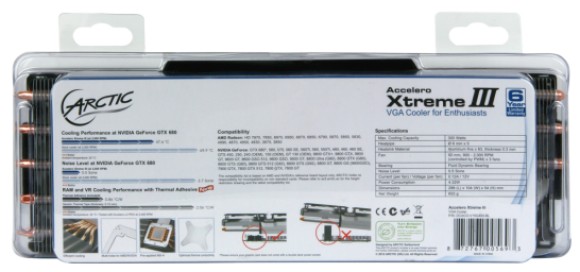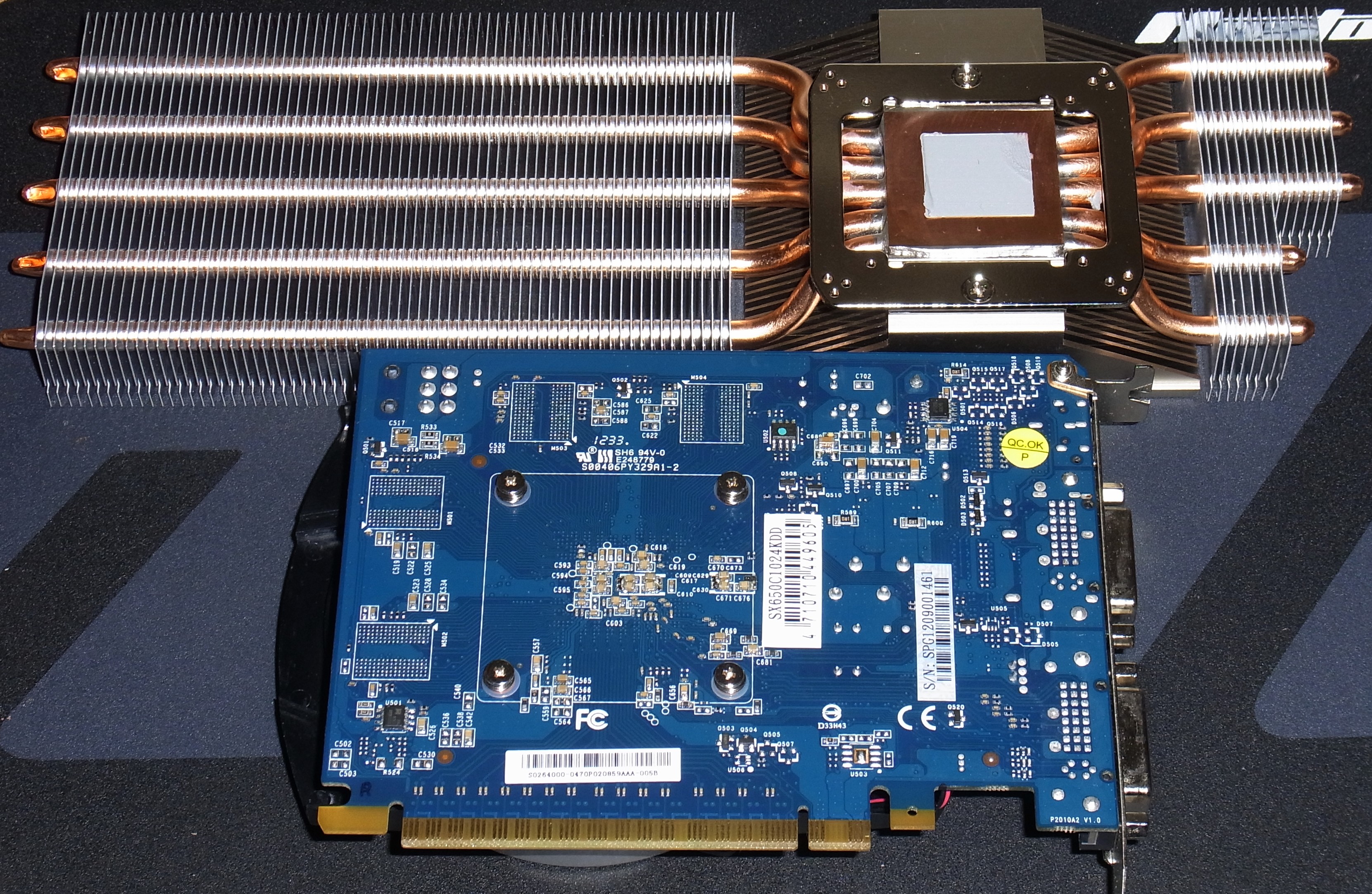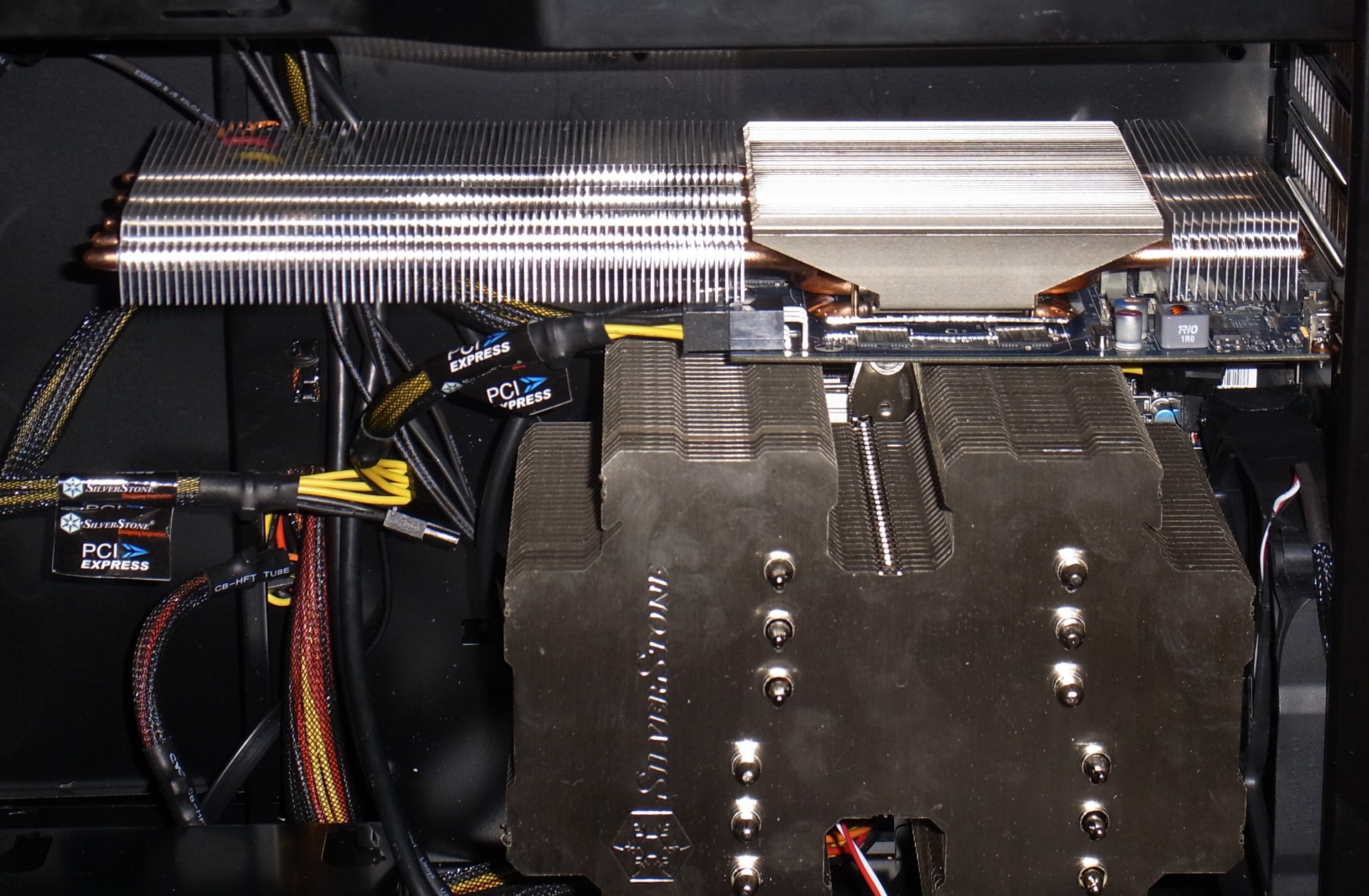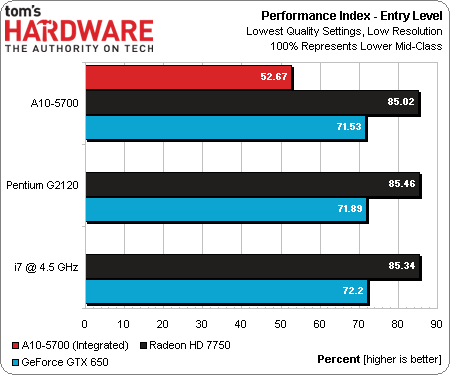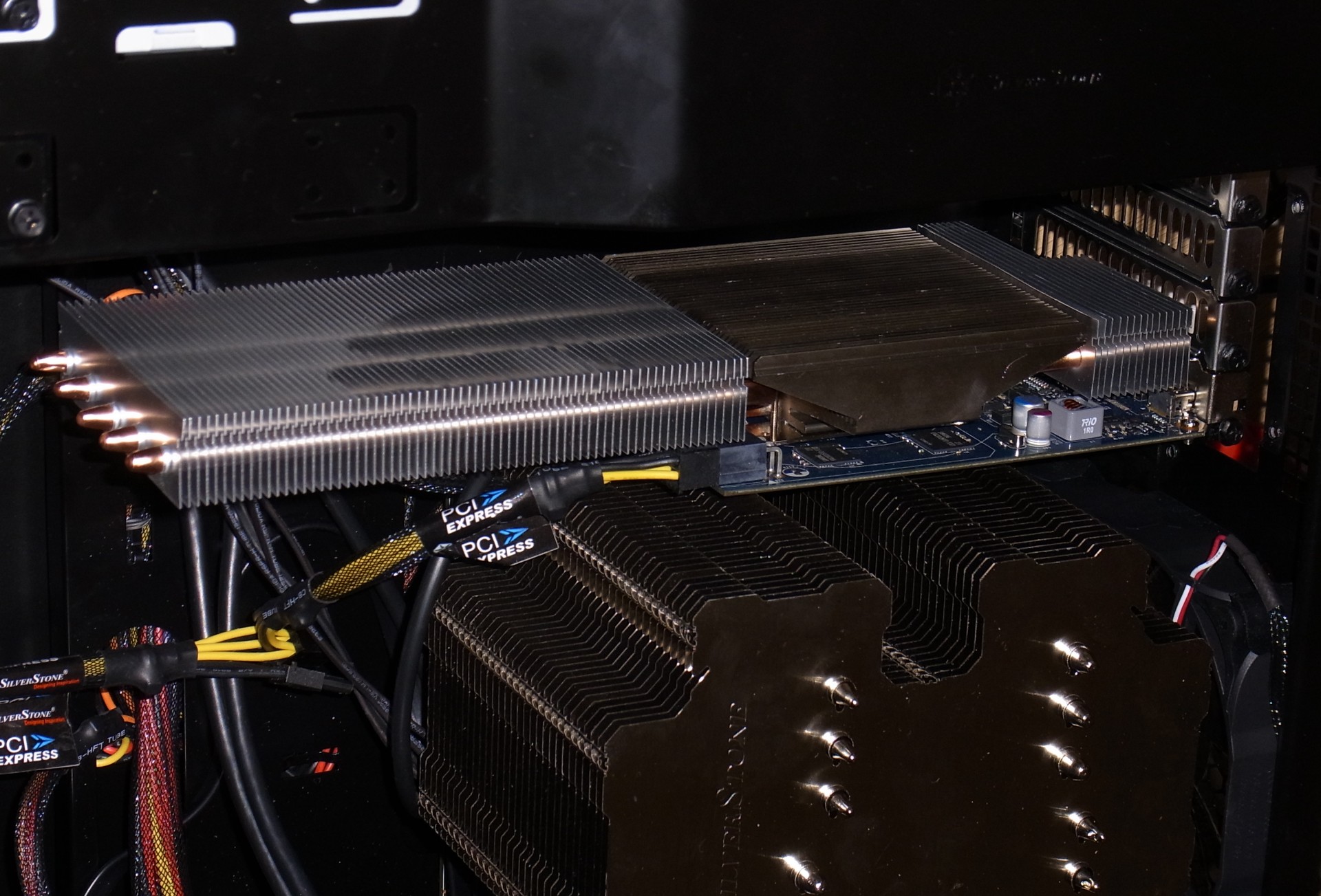Silent, But Deadly: Build Your Own Gaming-Ready 0 dB PC
For many folks, the most beautiful sound that a PC can make is no sound at all. How close can Tom's Hardware get to a zero-decibel configuration and still lend up with a compact, functional machine capable of mainstream gaming, without breaking the bank?
Building A Passive Nvidia GeForce GTX 650
Nvidia's GeForce GTX 650, Cooled Passively
The GeForce GTX 650 offers similar performance and power consumption as AMD's Radeon HD 7750. In theory, that'd make it a candidate for passive cooling. We weren't able to find a GTX 650 without a fan, though. So, we used Arctic's Accelero Xtreme III in place of the stock cooler. Nobody’s going to buy an expensive part like this to cool a mainstream graphics card, but it serves as a placeholder for similar coolers.
Installation is straightforward enough. The cooler's weight isn’t a problem because the graphics card is plugged in horizontally, with the cooler on top. So, the I/O bracket and PCB support its heft.
The same things we said about AMD's Radeon HD 7750 apply here as well. A system with a discrete graphics card benefits from an Intel CPU, which is going to run cooler and tolerate higher maximum core temperatures. So long as you use mainstream GPUs, though, neither a Pentium nor an A10 should limit your graphics performance.
Graphics Benchmarks
Bottom Line So Far
A passively-cooled GeForce GTX 650 comes close to the performance of a Radeon HD 7750, also with no active cooling. Again, this is to say that gaming performance is acceptable so long as you dial down your settings. It's too bad that there don't seem to be any add-in board partners selling GTX 650s with passive cooling.
Get Tom's Hardware's best news and in-depth reviews, straight to your inbox.
Current page: Building A Passive Nvidia GeForce GTX 650
Prev Page Adding Some Graphics Power Next Page CrossFire: A10-5700 And Radeon HD 6670
Igor Wallossek wrote a wide variety of hardware articles for Tom's Hardware, with a strong focus on technical analysis and in-depth reviews. His contributions have spanned a broad spectrum of PC components, including GPUs, CPUs, workstations, and PC builds. His insightful articles provide readers with detailed knowledge to make informed decisions in the ever-evolving tech landscape
-
azathoth I was disappointed there wasn't actual stress test temperature results of the APU for the passive cooling solution.Reply
But otherwise it's a neat article, personally I would sacrifice dead silence to use a cheaper HDD and perhaps more of those silent fans if I were to build one myself. -
Nintendo Maniac 64 As someone that also uses a semi-passive PC (fan only turns on when needed), I'm disappointed that you guys left out a few big things:Reply
1. undervolting the CPU and GPU
2. underclocking and farther undervolting the GPU for 2D mode
3. hybrid cooling setup for GPUs where the fan only turns on at a high temperature (may require GPU BIOS editing depending on GPU model)
OPTIONAL (due to risk): removal of CPU IHS -
Madn3ss795 Pentium G2120 + Sapphire Ultimate HD7750 would have been a better choice. And you can pay extra for a low-power Core i5 instead since it's not that expensive compared to the rest of this build.Reply -
ivyanev When i hear gaming from the TH I really expect to see something in the realm of 500$ SBM machine or at least something close. What I see here is realy nice office pc.Reply -
Nintendo Maniac 64 Reply
The main issue is the GPU, and that would require a hybrid passive-active cooling solution much like was done for the CPU, but for some reason they didn't even try such a thing...10589934 said:When i hear gaming from the TH I really expect to see something in the realm of 500$ SBM machine or at least something close. What I see here is realy nice office pc. -
twelve25 I wonder about an i5 or i7 S or T model and crossfire 7750's. You might need a bigger case and a longer motherboard that allows gaps between cards.Reply
